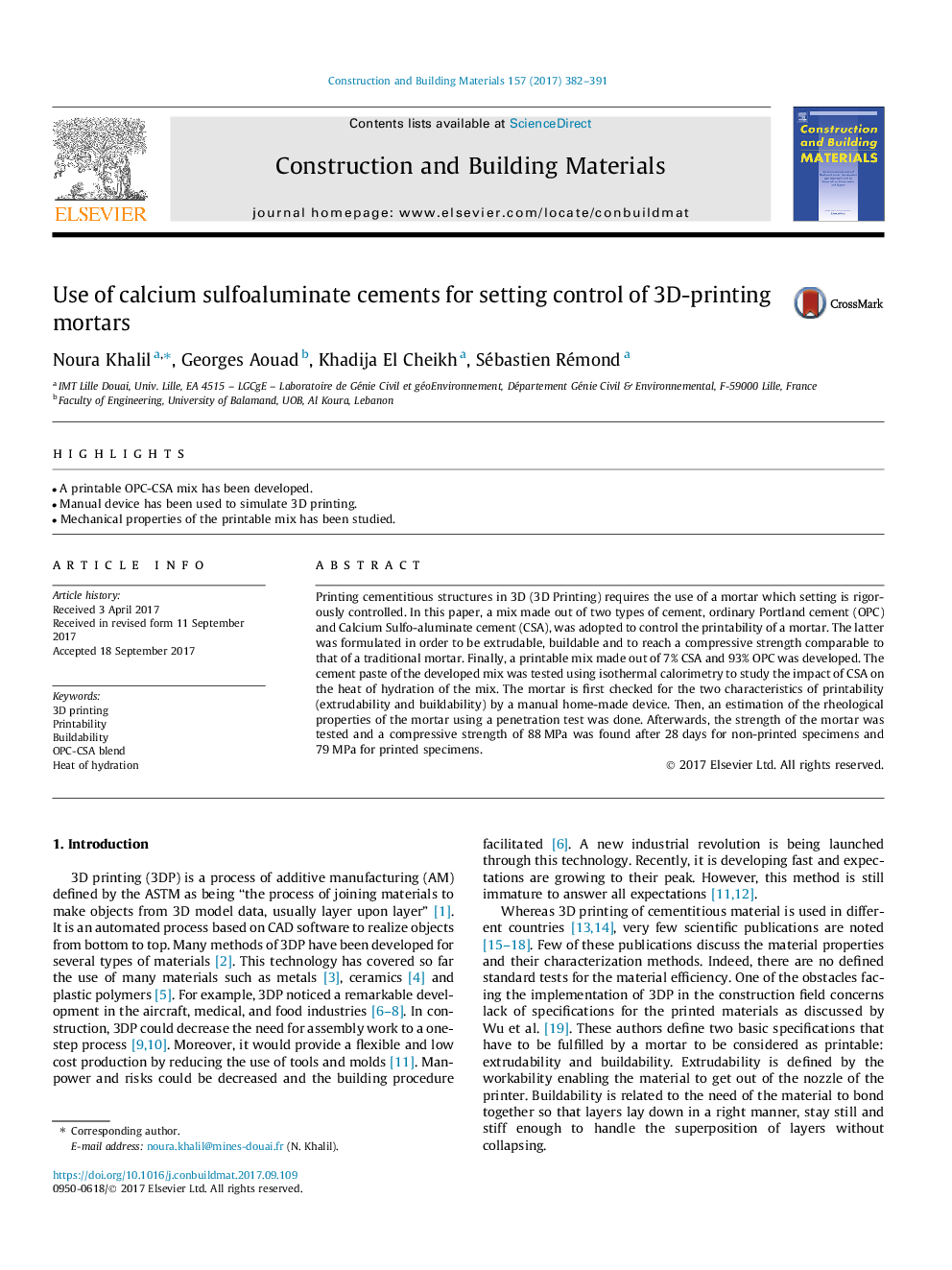| Article ID | Journal | Published Year | Pages | File Type |
|---|---|---|---|---|
| 4912883 | Construction and Building Materials | 2017 | 10 Pages |
Abstract
Printing cementitious structures in 3D (3D Printing) requires the use of a mortar which setting is rigorously controlled. In this paper, a mix made out of two types of cement, ordinary Portland cement (OPC) and Calcium Sulfo-aluminate cement (CSA), was adopted to control the printability of a mortar. The latter was formulated in order to be extrudable, buildable and to reach a compressive strength comparable to that of a traditional mortar. Finally, a printable mix made out of 7% CSA and 93% OPC was developed. The cement paste of the developed mix was tested using isothermal calorimetry to study the impact of CSA on the heat of hydration of the mix. The mortar is first checked for the two characteristics of printability (extrudability and buildability) by a manual home-made device. Then, an estimation of the rheological properties of the mortar using a penetration test was done. Afterwards, the strength of the mortar was tested and a compressive strength of 88Â MPa was found after 28Â days for non-printed specimens and 79Â MPa for printed specimens.
Related Topics
Physical Sciences and Engineering
Engineering
Civil and Structural Engineering
Authors
Noura Khalil, Georges Aouad, Khadija El Cheikh, Sébastien Rémond,
